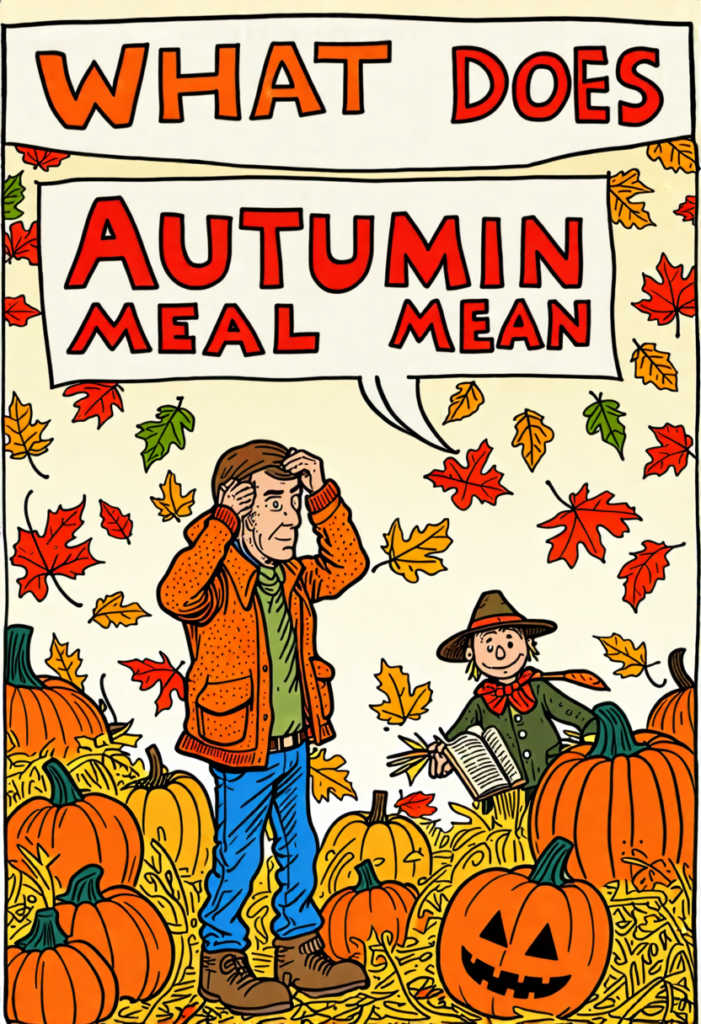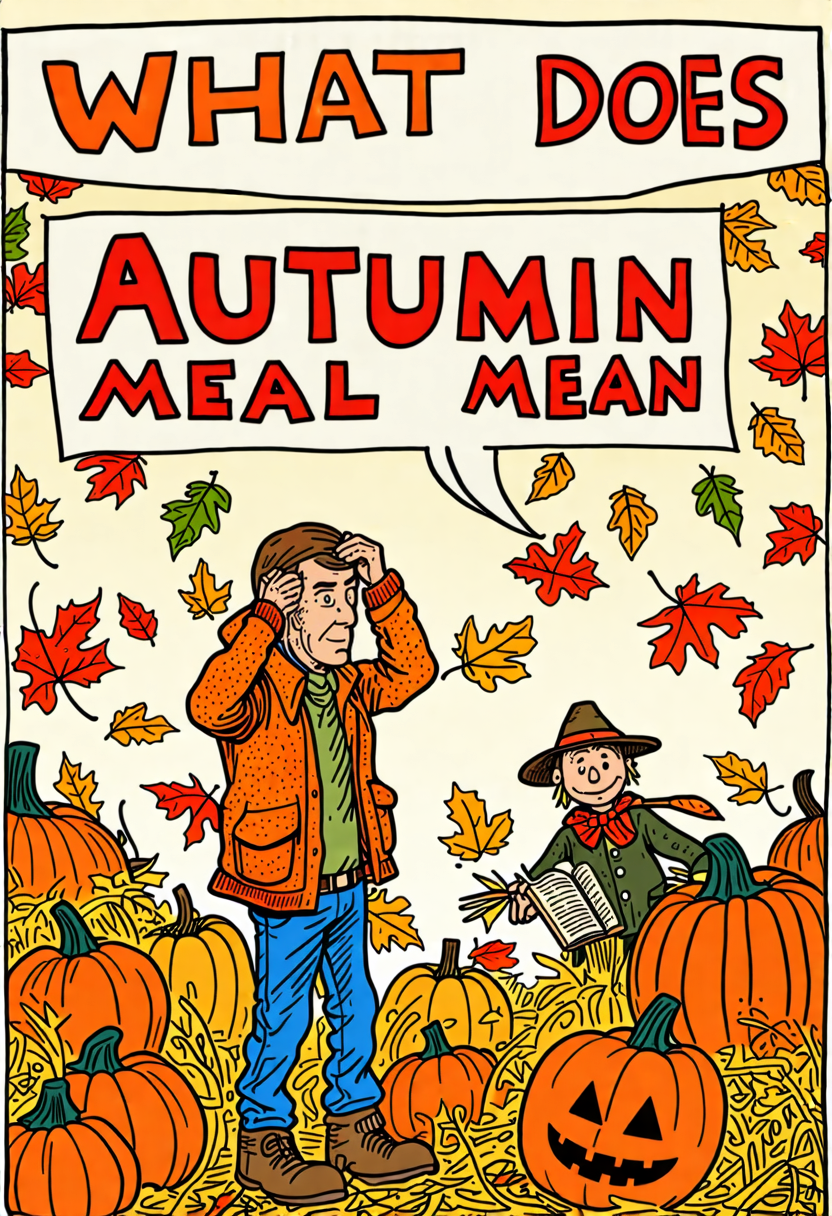What Does “Autumnal” Really Mean?
‘Autumnal’ describes anything related to the autumn season. This term spans September to November in the Northern Hemisphere and March to June in the Southern Hemisphere. It is characterized by cooler temperatures, changing leaves, and harvest celebrations.
Historically, the word evolved from Latin through Old French and Middle English, reflecting ancient connections to nature. Additionally, ‘autumnal’ can symbolize things that have passed their peak, or middle age. It appears frequently in literature and has rich cultural significance.
Definition of ‘Autumnal’
The term ‘autumnal’ refers to anything that is suggestive of or related to the autumn season. It often describes the changing leaves that characterize the fall months. In the Northern Hemisphere, autumn spans from September to November, while in the Southern Hemisphere, it occurs from March to June.
Beyond describing the season, autumnal can also indicate things that are past maturity or middle age. The word evokes images of colorful foliage, cooler temperatures, and the shift from summer to winter. It serves as a descriptor for the natural beauty and changes that occur during this period.
Historical Origins
Tracing its roots back to ancient times, the term ‘autumnal’ possibly originates from an Etruscan word. This ancient civilization, centered in what is now Italy, had significant influence on Roman culture and language. The Etruscans had a deep connection with the natural world, and their language reflected this bond.
Over time, the Latin word ‘autumnus’ emerged, directly linked to the Etruscan influence. From Latin, the term evolved into Old French as ‘autompne’ and eventually into Middle English as ‘autumn’. This historical journey shows how the term has been shaped by various cultures.
Today, ‘autumnal’ carries rich historical connotations, connecting modern usage with its ancient origins.
Seasonal Characteristics
How does the autumnal season distinctly manifest in nature?
Autumn is marked by a variety of changes. The most noticeable is the transformation of leaves. They shift from green to vibrant hues of red, orange, and yellow. This change occurs due to the reduction in chlorophyll as daylight decreases.
Cooler temperatures also signify the season, often bringing invigorating, crisp air. Additionally, animals begin preparing for winter. Birds migrate, and many mammals gather food.
This period is also known for its harvests. Crops like pumpkins, apples, and squash reach maturity, symbolizing abundance.

Literary Examples
Literary works often capture the essence of the autumnal season through vivid descriptions and evocative imagery. From Nathaniel Hawthorne’s reflections on autumnal sunshine to Wallace Stegner’s portrayal of September’s onset, the season is richly depicted. John Donne and John Clare also highlight autumn’s graceful and concluding phases in their writings.
| Author | Work | Quote |
|---|---|---|
| Nathaniel Hawthorne | Not Specified | “Do not waste autumnal sunshine by staying indoors.” |
| Wallace Stegner | Not Specified | “The feeling of September, the start of autumn.” |
| John Donne | Various Poems | “The grace of an autumnal face.” |
| John Clare | Various Works | “Referring to the last part of a period as autumnal.” |
| Multiple Authors | Various Works | “Autumnal equinox marks the crossing of the sun over the equator.” |
These literary pieces beautifully encapsulate autumn’s unique charm.
Common Synonyms
Common synonyms for ‘autumnal’ include terms like seasonal, fall, and harvest. The term ‘seasonal’ is broad, encompassing all seasons, but ‘autumnal’ specifically relates to autumn.
‘Fall’ is the American English equivalent of autumn, making it a straightforward synonym. ‘Harvest’ highlights the agricultural aspect of the season, referring to the period when crops are gathered.
Each synonym emphasizes different facets of autumn. ‘Seasonal’ captures the time of year, ‘fall’ points to the season itself, and ‘harvest’ underscores agricultural abundance.
These terms can be used interchangeably in many contexts but choosing the right synonym depends on the specific aspect of autumn one wishes to highlight.
Usage in Language
In various forms of language, ‘autumnal’ is frequently used to evoke the essence of the autumn season. This term appears in literature and poetry to describe the vibrant colors of fall leaves and the crisp air. It symbolizes the shift from summer to winter and often carries feelings of nostalgia and change.
- Literature and Poetry: Authors use ‘autumnal’ to paint vivid images of the fall landscape.
- Everyday Speech: People describe the autumn weather, foliage, or mood as ‘autumnal.’
- Symbolism: The term can represent maturity and the later stages of life.
‘Autumnal’ is versatile, capturing the multifaceted nature of the autumn season in various contexts. Its usage enriches the language by adding depth and imagery.
Cultural Significance
Autumnal festivals and traditions hold deep cultural significance around the world. In many cultures, autumn symbolizes harvest, change, and shift. Festivals like Thanksgiving in the United States, the Mid-Autumn Festival in China, and Oktoberfest in Germany celebrate abundance and gratitude. These events often feature autumnal colors and motifs, such as orange leaves and pumpkins, reflecting the season’s beauty.
Art and design frequently draw on autumnal themes to evoke warmth and nostalgia. Literature and poetry also use autumnal imagery to capture the essence of this time of year.
The term ‘autumnal’ plays an essential role in cultural expressions, highlighting the importance of this season in human tradition and creativity.
Symbolism and Emotions
The term ‘autumnal’ often evokes a sense of nostalgia and reflection. This season symbolizes change, maturity, and the passage of time. The emotions tied to autumnal imagery are deeply rooted in human experience, resonating with:
- Transition: The shift from the warmth of summer to the chill of winter.
- Harvest: A time of abundance and gratitude for the year’s yield.
- Melancholy: A bittersweet awareness of life’s fleeting nature.
Autumnal scenes often carry a wistful beauty, reminding us of the cycles of life and nature. The colors of falling leaves and the crisp air inspire introspection and a connection to past memories. In literature and art, autumnal themes are frequently used to explore complex human emotions and universal truths.








